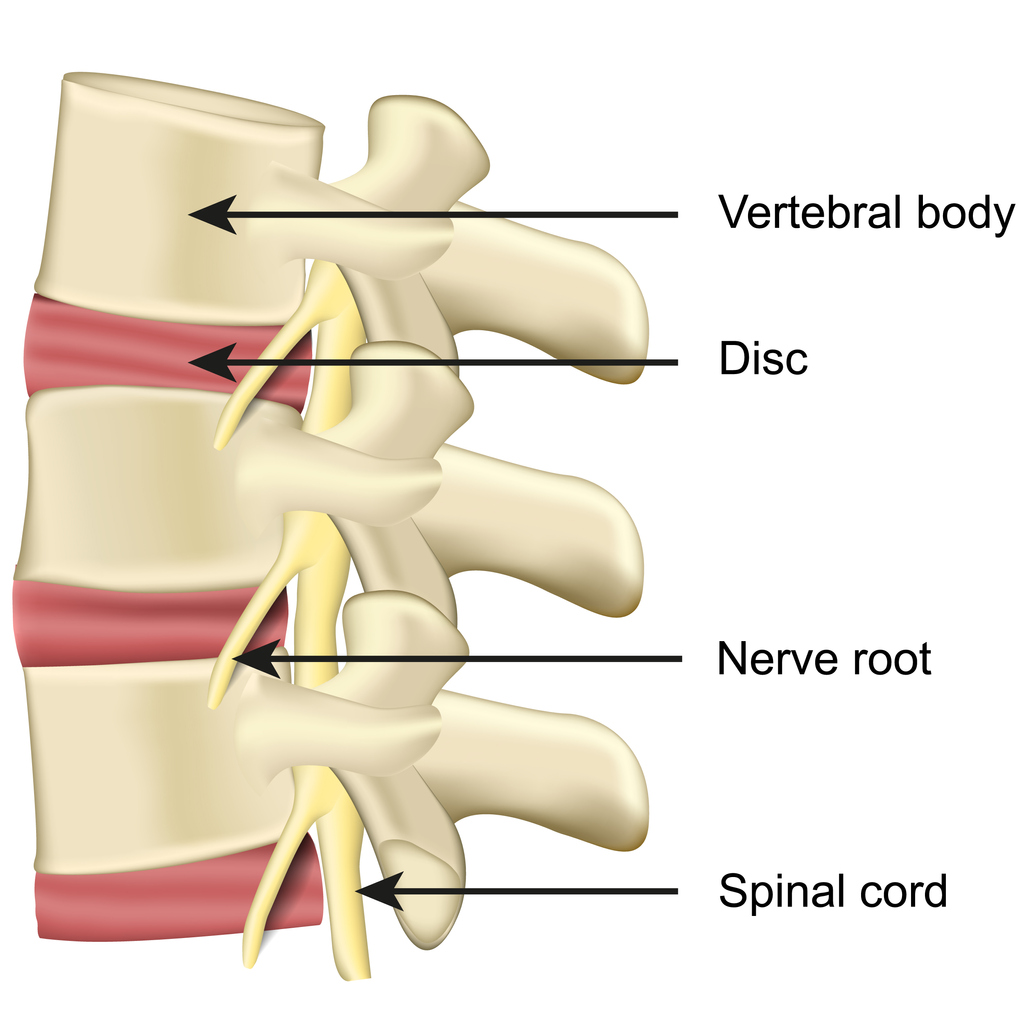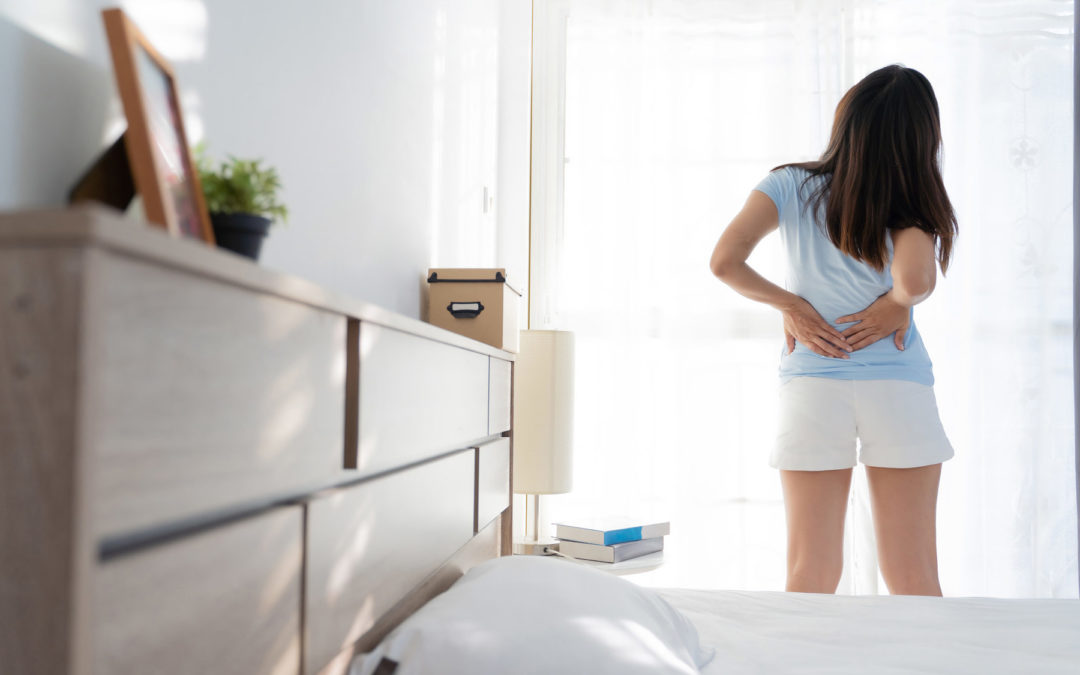What is Low Back Pain
Every year countless individuals arrive at their physician’s office with complaints of low back pain (LBP). LBP can be described as pain felt in the lumbar spine which lies just below the thoracic spine and directly above the sacrum.

What Causes Low Back Pain
More than 80% of individuals who present with LBP will have non-specific causes. Non-specific LBP can be defined as back pain in the absence of a specific underlying condition that can be reliably identified. Examples of non-specific LBP include muscular strains due to poor posture during prolonged sitting and/or standing. Faulty movement patterns such as bad technique when lifting heavy loads (i.e. exercise, or picking up items from the ground) are also common causes of acute and chronic non-specific LBP.
The lumbar spine is quite complex in structure. It is composed of five bony vertebrae separated by intervertebral discs that surround the spinal nerves. These nerves are responsible for signaling the muscles that control movement of the torso and lower body movement. The lumbar spine additionally functions in alignment with the entire spinal column to protect the spinal cord, support and stabilize the upper body. Because the lumbar spine is composed of several structures, LBP can be caused by a number of factors. Below are a few common specific causes of LBP:
Disc Herniation
Each vertebra is separated by an intervertebral disc. These discs serve as soft cushions to help absorb some of the impact experienced during spinal movement. Each disc has a soft center called the nucleus. The nucleus is surrounded by a tougher outer area called the annulus. When the center of these discs push on or through the outer area, it can compress surrounding spinal nerves and cause pain.
Lumbar Radiculopathy
When a spinal nerve root in the lower back becomes injured, inflamed, or compressed, it can cause pain that radiates from the lower back down to the legs and feet. A common nerve compressed in this way is the sciatic nerve. This condition is also known as “sciatica”. Individuals experiencing lumbar radiculopathy may also experience numbness, tingling, and muscle weakness in addition to pain throughout the legs.
Lumbar Spondylosis
When osteoarthritis occurs in the lower back, it is referred to as lumbosacral spondylosis. This condition is characterized by degenerative changes in the lumbar spine. Pain caused by lumbar spondylosis is often accompanied by stiffness. It is more prevalent in older individuals
Spinal Stenosis
Together, the vertebrae form a column in which the spinal cord passes through. When this area of passage narrows it can compress the nerves within the vertebral column. This condition is more prevalent in the lumbar spine than any other region. LBP caused by spinal stenosis can also be accompanied by numbness, tingling and weakness in the legs and feet.
Spinal Deformity
If you look at a healthy spine from the side, you’ll notice a slight inward, or lordotic, curvature in the lumbar spine. However, any excessive curvature of the spine is considered a spinal deformity. Similar to lumbar spondylosis, deformities of the lumbar spine are often degenerative and experienced in older individuals.Common spinal deformities within the lumbar spine include scoliosis, marked by excessive sideways curvature, and lordosis (also known as sway back), marked by a backwards tilt in the pelvis. Both conditions can lead to LBP.
Ankylosing Spondylitis
Ankylosing spondylitis is an autoimmune disorder that can cause inflammation, similar to arthritis, in the lumbar spine. While the spinal column is a flexible structure, this condition can cause the vertebrae to fuse together resulting in stiffness, hunched posture, and LBP.
Treatments for Acute Pain
Activity
Many episodes of low back pain will resolve within 4 weeks. The goal during this time period is to decrease symptoms and maintain movement. Bedrest has been linked to slower recovery. Instead, maintaining as much daily activity as possible, with modifications as needed, and avoiding long periods of inactivity are important for faster recovery.
Medication
Limited courses of non-steroidal anti-inflammatories or acetaminophen may be helpful for improving pain, but are not essential for recovery. Other medications such as opioids, muscle relaxants, steroids are generally avoided in acute cases.
Conservative Treatments
- Exercise Therapy
- Massage
- Spinal manipulation
- Heat/Ice
- Education
Treatments for Subacute and Chronic Pain
Activity
Maintaining activity is also critical for recovery in patients with low back pain that has surpassed the 4 week period. Longer bed rest generally means longer recovery times.
Conservative Treatments
- Exercise therapy: In the subacute and chronic phases, exercise therapy should be the mainstay of treatment. At this stage, therapeutic exercises are focused on decreasing pain, improving stabilization and building strength. In addition, we find that engaging in general physical fitness activities with exercises that do not provoke pain is important for physical and mental coping. Whatever exercise therapy is used, patients should be counseled on using optimal form to avoid worsening symptoms.
- Mind-Body Treatments: Identifying and addressing the mental aspects of pain are essential for recovery in many patients. Options include Cognitive Behavioral Therapy (CBT), Mind Body Stress Reduction (MBSR), Biofeedback. For self-directed care, we routinely recommend meditation and progressive relaxation techniques for patients.
- Hands-on Treatments: These passive treatments can also improve symptoms and enhance recovery:
- Massage
- Acupuncture
- Chiropractic Care
Medications
Generally, the treatments above are preferred over using medications. However, when medication is needed, there are several options. All medication has side effects and should be used with a clear understanding of the risks.
- Non-steroidal anti-inflammatories are first line therapy. Acetaminophen is used for cases when NSAIDS are contraindicated
- Muscle relaxants in short-term use may be helpful.
- Duloxetine, a selective serotonin-norepinephrine reuptake inhibitor (SNRI), may be helpful if long-term treatment is needed.
- Amitriptyline, Nortriptyline, and Desipramine are tricyclic antidepressants that can be used for chronic pain syndromes.
Other Treatments
This article focused on several of the most effective options. There are many other treatments that are tried for low back pain with varying amounts of evidence and efficacy, including ultrasound, laser, traction, TENS, and PEN.
How to Get Started
Ignoring persistent back pain isn’t an effective long-term solution. Recurrences of LBP are so common, affecting up to 50 percent of patients within six months and 70 percent within 12 months. However, patients in the acute, subacute and chronic phases can benefit from conservative treatments to break the cycle.
At Avid, we customize a program for each patient that considers their specific needs and likelihood of developing chronic symptoms. Most patients can do this program in a self-directed manner without frequent visits or special equipment. Initial and follow-up visits can be conducted online or in-person
Co-authored by: Ameera N. Teal MS, CSCS, EP

